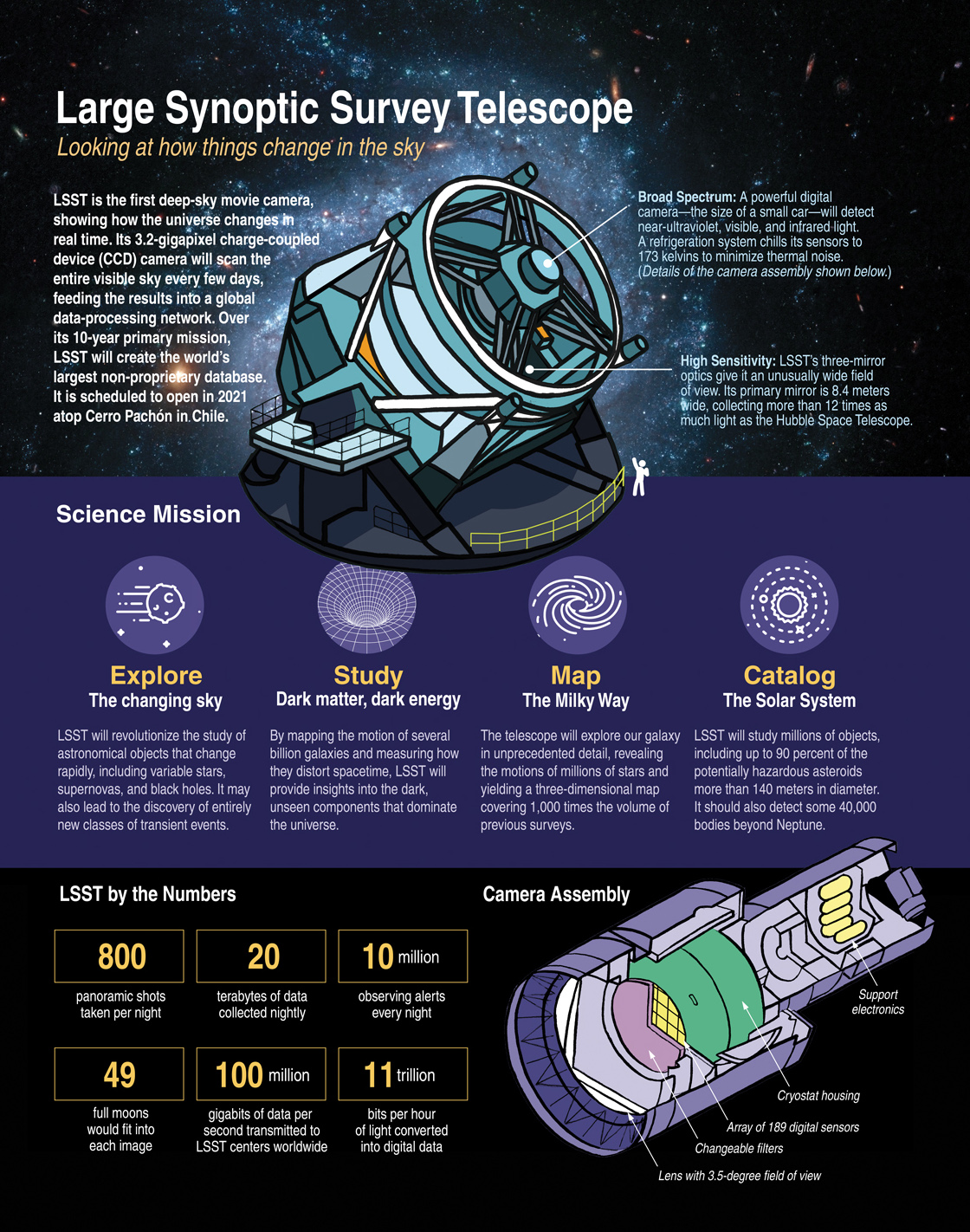Large Synoptic Survey Telescope
By
Looking at how things change in the sky
Looking at how things change in the sky

LSST is the first deep-sky movie camera, showing how the universe changes in real time. Its 3.2-gigapixel charge-coupled device (CCD) camera will scan the entire visible sky every few days, feeding the results into a global data-processing network. Over its 10-year primary mission, LSST will create the world's largest non-proprietary database. It is scheduled to open in 2021 atop Cerro Pachón in Chile.
A powerful digital camera—the size of a small car—will detect near-ultraviolet, visible, and infrared light. A refrigeration system chills its sensors to 173 kelvins to minimize thermal noise. (Details of the camera assembly shown below.)
LSST's three-mirror optics give it an unusually wide field of view. Its primary mirror is 8.4 meters wide, collecting more than 12 times as much light as the Hubble Space Telescope.

Infographic by Gary L. Schroeder
LSST will revolutionize the study of astronomical objects that change rapidly, including variable stars, supernovas, and black holes. It may also lead to the discovery of entirely new classes of transient events.
By mapping the motion of several billion galaxies and measuring how they distort spacetime, LSST will provide insights into the dark, unseen components that dominate the universe.
The telescope will explore our galaxy in unprecedented detail, revealing the motions of millions of stars and yielding a three-dimensional map covering 1,000 times the volume of previous surveys.
LSST will study millions of objects, including up to 90 percent of the potentially hazardous asteroids more than 140 meters in diameter. It should also detect some 40,000 bodies beyond Neptune.
Click "American Scientist" to access home page
American Scientist Comments and Discussion
To discuss our articles or comment on them, please share them and tag American Scientist on social media platforms. Here are links to our profiles on Twitter, Facebook, and LinkedIn.
If we re-share your post, we will moderate comments/discussion following our comments policy.